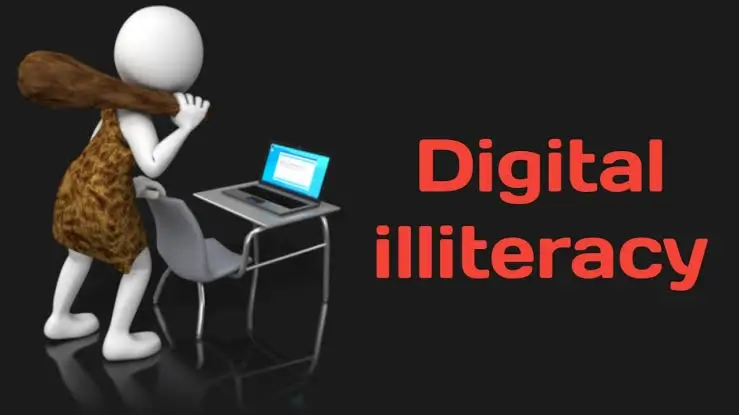Blockchain is widely heralded as a revolutionary force across industries—from finance and logistics to healthcare and property. Yet despite its potential, real societal integration remains limited. The technology is functional, but human behaviour, cultural norms, and trust issues continue to hold it back.
Let’s explore why blockchain’s mass adoption isn’t just delayed—it’s tangled in deeper societal and psychological barriers.

Blockchain’s big leap still awaits culture ( Image Source: CoinGeek )
The Technology Isn’t the Problem—People Are
Much like the early internet, blockchain faces a steep learning curve. While its promise of decentralisation and transparency is clear, mass adoption requires more than technical readiness—it requires cultural alignment. Blockchain disrupts how we manage money, data, and authority. That level of change demands more than innovation; it demands comfort and trust.
The Cultural Mismatch
Technology alone doesn’t change society—culture does. Blockchain flips traditional systems on their head, stripping away central authorities and inviting users to take control. But most people prefer simplicity and stability. Until blockchain aligns with the way we live and think, adoption will lag. People need to trust before they try—and that takes time.
Blockchain’s Image Problem: Crypto Baggage
For the general public, blockchain is often synonymous with cryptocurrency—and not in a good way. Associations with Bitcoin speculation, scams, and fraud have tainted the technology’s reputation. Despite blockchain’s broader uses, its close ties to crypto continue to distort its public image. Until that changes, scepticism will remain high.
Trust vs. Understanding: The Paradox
Ironically, a system designed to be “trustless” still needs people’s trust to thrive. But how can someone trust what they don’t understand? Terms like “smart contracts” and “consensus mechanisms” sound like jargon to the average person. The lack of clear knowledge fuels fear—and fear stalls adoption.
Digital Illiteracy Is a Major Roadblock
Most people can’t confidently explain what blockchain is. Even tech-forward communities often misunderstand it. With digital literacy still low, and misinformation rampant across social media, blockchain remains out of reach for the everyday user. Education, not just evangelism, is critical for moving forward.

Lack of tech know-how stalls adoption ( Image Source: The Chenab Times )
The Infrastructure Gap
Even when people are willing to try blockchain, the tools often let them down:
- Wallets are unintuitive.
- Transaction costs vary wildly.
- Decentralised apps (DApps) lack polish.
- Blockchains can’t always communicate with one another.
Until the infrastructure matches the ease of mainstream platforms like Gmail or PayPal, adoption will remain niche.
Pilot Projects Don’t Equal Public Adoption
While companies routinely test blockchain solutions, few move beyond the prototype stage. These experiments often exist more for PR than practical use. Without measurable returns or user engagement, businesses tend to abandon their blockchain plans. The excitement fades, and traditional systems take over again.
Regulatory Uncertainty Stalls Progress
Global blockchain regulation remains fragmented. Some nations welcome it; others ban it outright. This inconsistency creates legal ambiguity that scares off investors, confuses businesses, and discourages users. Even in progressive regions like Australia, initiatives such as token mapping are still early-stage. For true adoption, the rules must be clear and stable.
Human Nature Resists Radical Change
People love innovation—but not when it disrupts their comfort zones. Blockchain rewrites how we think about ownership, authority, and interaction. That’s no small shift. Change this foundational requires time, familiarity, and a shift in collective mindset. Until then, most people will stick to what they know.

Change meets human hesitation ( Image Source: LinkedIn )
Bright Spots: Where Blockchain Is Working
Despite the hurdles, blockchain is proving its value in select areas:
- Supply Chains: Australian wineries use it to authenticate product origins.
- Digital Identity: Countries like Sierra Leone use it to issue secure, tamper-proof IDs.
- Real Estate: Tokenised ownership and smart contracts are streamlining transactions.
These examples show that when education, infrastructure, and need align, blockchain thrives.
It’s Not “Blockchain or Bust”
Cultural adoption doesn’t require chain to replace everything. In fact, the best future might be a hybrid one—where blockchain works behind the scenes. Like the internet’s protocols, blockchain should eventually become invisible to the user. What matters is functionality, not flashy tech.
What Needs to Happen Next
For blockchain to go mainstream, five key shifts are needed:
- Simplify the user experience.
- Tell better, human-focused stories.
- Make blockchain education mainstream.
- Push for regulatory clarity and unity.
- Focus on solving real problems—not riding hype.
Mass adoption won’t come from another whitepaper. It’ll come from people using blockchain without even knowing it.
Final Thought: The Culture Curve Is the Real Delay
It isn’t behind schedule—our collective readiness is. The hype has cooled, and builders are quietly preparing. What comes next isn’t a wave of buzz, but a slow, steady shift toward usefulness. When blockchain becomes a tool people use without thinking, it will have truly arrived.
Until then, we wait—not for better code, but for better culture.

